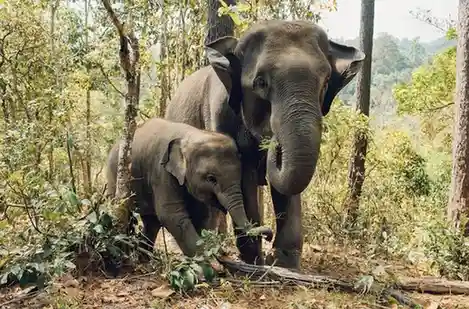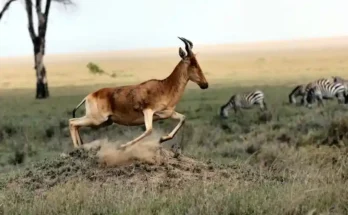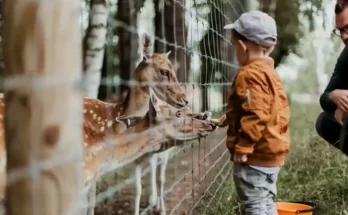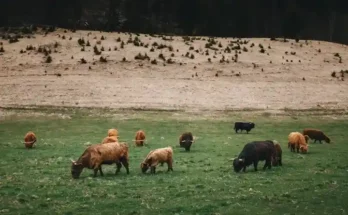The Animal Kingdom:
The world we live in is not only shared by humans but is a vibrant tapestry woven together by countless species of animals. From the buzzing of bees in a summer garden to the majestic roar of lions across the savanna, animals form an essential part of our ecosystem and biodiversity, supporting the balance and health of life on Earth.
Whether they walk, swim, fly, or crawl, each animal has a story, a purpose, and a place in the grand orchestra of life.
Their world is one of instinct, mystery, survival, and beauty. Despite centuries of human development, animals continue to shape our landscapes, inspire our culture, and teach us about the very essence of life.
The Role of Animals in the Natural World:
-
Ecosystem Engineers and Balancers
Animals are not just inhabitants of the earth, they are the very engineers of ecosystems. Beavers, for instance, are known as natural builders, transforming landscapes with their dams. Elephants shape entire forests by pushing over trees and creating pathways for other creatures. Birds like vultures keep environments clean by consuming carrion, reducing the spread of disease.
Predators and prey operate in a delicate balance, keeping populations in check and maintaining a healthy ecosystem. Without predators, certain species would overpopulate, leading to the destruction of vegetation and collapse of local biodiversity.
-
Pollinators and Seed Spreaders
Many animals are nature’s gardeners. Bees, butterflies, hummingbirds, and bats play critical roles in pollination, ensuring plant reproduction and sustainable food systems.Without pollinators, much of the food humans rely on would cease to exist.
Similarly, animals like monkeys, squirrels, and even bears help spread seeds by consuming fruit and dispersing them through their droppings. This simple yet crucial act helps forests regenerate and maintain their diversity.
Animals and Human Life:
-
Companionship and Emotional Connection
Perhaps one of the most intimate and visible ways animals impact our lives is through companionship. From dogs and cats to birds and rabbits, animals often become cherished members of families. Their presence offers emotional support, reduces stress, and even lowers blood pressure.
In times of loneliness or hardship, a pet can become a source of comfort, nonjudgmental friendship, and unconditional love. Animals have a unique ability to sense human emotions and respond with warmth and affection.
-
Animals in Therapy and Healing
Animals are now widely recognized for their healing abilities. Therapy dogs visit hospitals, schools, and senior homes, offering comfort and calm. Equine therapy, which involves horses, has shown significant results in helping people with mental health challenges, PTSD, and developmental disorders.
This remarkable connection between humans and animals goes beyond affection. It reaches into the realm of deep psychological healing, building trust and confidence where human efforts sometimes fall short.
-
Providers of Livelihood and Labor
For many communities around the world, animals are the backbone of survival. Cattle provide milk, goats offer meat and wool, and chickens supply eggs. In rural economies, animals are not only sources of food but symbols of wealth and stability.
In some parts of the world, animals still play critical roles in transportation and agriculture. Horses, oxen, and donkeys help plow fields and carry goods, supporting livelihoods where modern machinery is not accessible.
Importance of Animals in Culture and History:
-
Animals in Mythology and Symbolism
Animals have long held a sacred place in human mythology and belief systems. In Ancient Egypt, cats were worshipped and protected by law. Native American traditions revere animals as spirit guides, each representing specific traits and wisdom. In Chinese culture, the zodiac is based on animals, each year attributed to one that shapes personality and destiny.
From the owl of wisdom to the lion of courage, animals have helped humans articulate qualities they strive to emulate. They appear in folklore, legends, and religious texts, reflecting our deep connection with them through the ages.
-
Inspiration for Innovation
Many modern technologies are inspired by animals. Engineers study birds to improve aircraft design, mimicking the aerodynamics of their wings. The structure of shark skin has inspired materials that reduce bacteria in hospitals. Even the design of robots often follows the movements of animals for agility and adaptability.
Nature, with all its complexity and genius, provides a living blueprint for innovation, proving that animals are not only survivors of evolution but teachers of ingenuity.
The Unseen Impact of Losing Animals:
-
The Threat of Extinction
Despite the critical roles animals play, many species are now under severe threat due to habitat destruction, climate change, poaching, and pollution. Researchers warn that losing even one species can trigger a ripple effect across ecosystems, destabilizing entire habitats. This phenomenon is explored in depth in a recent IFAW post on how protecting one species benefits entire ecosystems, emphasizing why each extinction matters.
The loss is not just ecological, it is deeply personal. When animals vanish, we lose a part of ourselves, a piece of our shared heritage, and a source of inspiration for future generations.
-
Animal Conservation
Conservation is not just about saving animals for the sake of beauty or sentiment. It is about preserving the balance of life. Healthy animal populations ensure healthy ecosystems, which in turn support human life through clean air, fertile soil, and fresh water.
Organizations around the globe are working to protect endangered animals, restore habitats, and educate communities about the importance of biodiversity. These efforts are not optional, they are essential for the survival of all life on Earth.
What We Can Learn from Animals?
-
Lessons in Survival and Adaptation
Animals are masters of survival. Arctic foxes withstand freezing temperatures. Camels endure scorching deserts. Octopuses display incredible intelligence and camouflage abilities. Observing these creatures reminds us of the power of adaptation, resilience, and instinct.
Each animal has its own rhythm and way of life. They live in the moment, driven by purpose and instinct, often free of the complexities that burden human life. In their simplicity lies profound wisdom.
-
Reminders of Harmony and Coexistence
Perhaps the greatest lesson animals offer is the art of coexistence. In the wild, every species knows its role, its boundaries, and its contribution to the larger system. There is no greed, no waste, only balance.
Humans can learn to live in greater harmony with nature by observing how animals coexist with their surroundings. The more we respect and protect them, the more we align ourselves with the natural order of life.
Conclusion:
Animals are more than just creatures we share this planet with. They are companions, healers, workers, teachers, and essential members of the ecosystem. Their importance in our lives, both seen and unseen, runs deep.
As we forge ahead in a rapidly changing world, the need to protect, respect, and understand animals has never been greater. By doing so, we preserve not just their world, but our own.
In the grand story of Earth, animals are not just background characters. They are co-authors of life itself.




